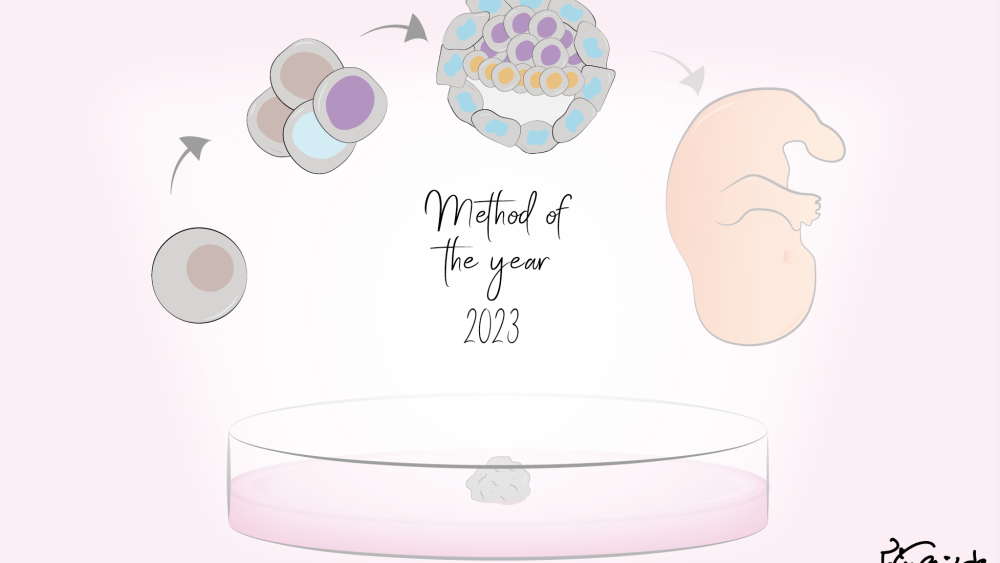As we approach the eagerly awaited New Year of 2024, let’s rewind the clock and reflect on years-long research that has been revolutionizing our understanding of human development. Scientists keep creating embryos in a dish solely from stem cells, bypassing the use of human embryos. This approach offers hope for addressing questions once deemed impossible. Why and how so many pregnancies end in loss? How can we prevent this? How tissues and organs are formed? And how can this knowledge aid in repairing and constructing organs in the lab for patients in need? While knowing the answers edges into the future, let’s delve into the past and present to understand how it can be achieved.
In nature, the union of a male gamete (sperm) and a female one (egg) results in the formation of a zygote, marking the beginning of a new life. As the zygote divides, it transforms into a blastocyst—a ball of cells that eventually implants into the inner lining of the uterus (endometrium). At this point, cells within the embryo specialise into extraembryonic tissues, serving to safeguard and provide essential resources during development. Simultaneously, they organize into germ layers that will eventually give rise to diverse tissues and organs of the organism. The challenge with understanding the earliest stages of human development is that it occurs hidden from our view, inside the mother.
A recent solution to this challenge is the development of various systems for culturing human embryos outside the uterus until 14 days after fertilization. This aligns with the internationally agreed limit for human embryo culture.
In one approach, researchers led by Magdalena Zernicka-Goetz genetically-modified human embryonic stem cells to guide their development towards formation of extraembryonic tissues. These modified cells were then combined with unaltered human embryonic stem cells, resulting in the self-organization of embryo-like structures. Alternatively, a team spearheaded by Berna Sozen took a distinct route, opting to grow cells in medium containing specific factors to program the fate of extraembryonic tissues. But these models are not flawless, they lack trophoblast-derived cells, crucial stem cells that eventually contribute to the formation of placenta.
As we forge ahead in crafting more advanced in vitro models of human embryos, there is a growing need for tools that let us study them in setting closely resembling the natural environment of the uterus. This marks an exciting moment as scientists from diverse fields – embryologists, bioengineers and computational biologists – join their forces to unravel the intricacies how embryo is developed inside mother’s womb and figure out ways to mimic this process outside the body. But that’s just a glimpse into the future of science…
Despite the ethical and technical considerations arising from advances in modelling human development, these breakthroughs open up tremendous possibilities in addressing pregnancy-related disorders and gaining insights into the formation of tissues and organs.
Methods for modelling development were named Method of the Year 2023 by renowned scientific journal, Nature.

